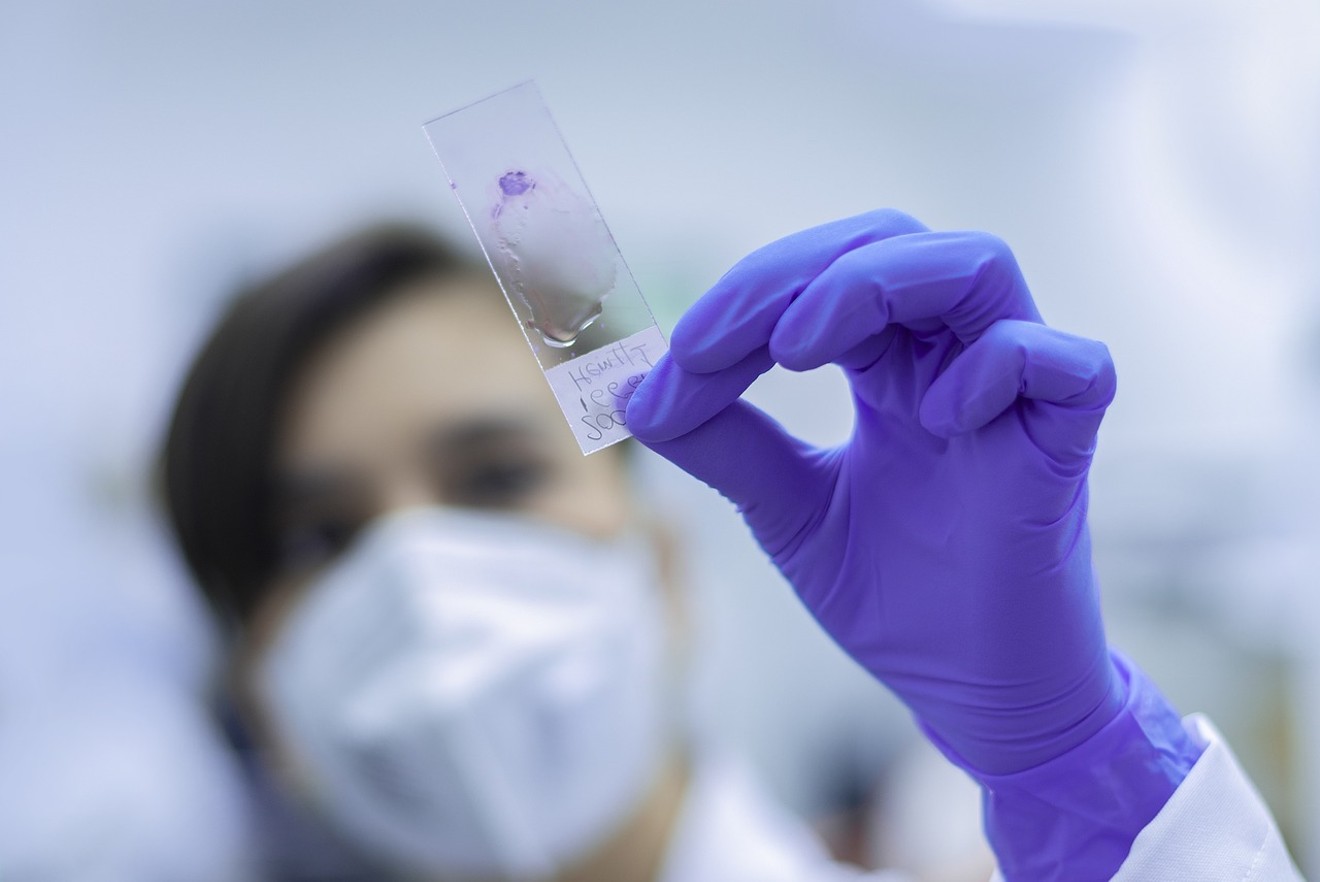Houston's independent source of
local news and culture
- Welcome,
Insider - Login
- My Account
- My Newsletters
- Contribute
- Contact Us
Sponsored Content
Tripeptide 1 Research
 Tripeptide-1 (GHK-Cu Basic): Gene Research
Tripeptide-1 (GHK-Cu Basic): Gene Research
Studies suggest the potential of GHK on stress and injury response genes is extensive and may include tissue remodeling, antioxidant, anti-inflammatory, anti-pain, anti-anxiety, blood vessel growth, neuron outgrowth, and anti-cancer activity. GHK is active with or without copper.
GHK Peptide: What is it?
A tripeptide, GHK, consists of the following amino acids: glycyl, histidine, and lysine. Urine, plasma, and saliva are all naturally occurring sources. Results from studies on GHK's potential for wound healing, infection management, hair growth, cancer, brain health, and cosmetic applications have been promising.
GHK vs. GHK-Cu: How Are They Different?
Research suggests that both copper- and copper-free GHK may modulate a wide array of genes involved in stress and injury response, including those involved in tissue remodeling, inflammation, pain, anxiety, blood vessel development, neuron outgrowth, and cancer prevention. Injuries cause the breakdown of proteins, which release SPARC protein and GHK, which are included in the collagen molecule.
Copper, a transitional metal, is essential for the survival of all eukaryotic creatures. Researchers speculate that the potential to change its state from oxidized Cu(II) to reduced Cu(I) may make it a crucial cofactor in many biological processes involving electron transfer. The creation of connective tissue, cellular respiration, antioxidant defense, detoxification, and a dozen other key biological events are catalyzed by enzyme changes in copper oxidation states. Numerous vital biological functions rely on copper, including iron metabolism, oxygenation, neurotransmission, and embryonic development.
GHK Peptide and Fibrinogen
The alpha, beta, and gamma polypeptide chains make up fibrinogen. GHK has been hypothesized to silence the gene encoding the beta chain of fibrinogen possibly. Scientists suggest that fibrinogen production may be inhibited without sufficient FGB because the three polypeptide chains must be proportionate.
Through its interactions with fibrinogen genes, GHK has also been theorized to inhibit the production of interleukin-6 (IL-6), an inflammatory cytokine that is a key positive regulator of fibrinogen synthesis. The production of IL-6 by skin fibroblasts and the expression of the L-6 gene by SZ95 sebocytes are speculated to be inhibited by GHK in cell culture systems. GHK's potential on the FGB gene and IL-6 production suggests that fibrin gen synthesis may be suppressed.
GHK Peptide and DNA
Investigations purport that DNA damage is quickly repaired in young, healthy cells, but DNA damage tends to build up over time. One way to slow down the aging process is to reset the activity of genes that repair DNA. Researchers assume the DNA repair genes were the main targets of GHK's stimulatory effects.
GHK Peptide and Free Radical Damage
Atherosclerosis, cancer, diabetes, nephropathy, Alzheimer's disease, and other serious age-related pathologies are associated with free radicals and the harmful byproducts of lipid peroxidation. Findings imply that in contrast to two pro-oxidant genes, GHK may promote the expression of fourteen antioxidant genes.
GHK Peptide and Insulin-Like Genes
Higher concentrations of insulin and insulin-like proteins shorten life expectancy, according to a theory that puts the insulin family in a negative regulatory role. In this system, GHK seems to activate three genes while repressing six others.
Many species' biological aging processes include the insulin/IGF-1-like receptor pathway. Because GHK has been hypothesized to inhibit 6 out of 9 insulin/IGF-1 genes, the gene expressed in the data implies that it may suppress this pathway. It has been hinted that insulin/IGF-1-like signaling may be present in both worms and humans. Extending longevity and slowing the degenerative aging process in several creatures, including mice, has been speculated in vitro by mutations that decrease insulin/IGF-1 signaling.
GHK Peptide and Cancer Genes
Cancer prevention relies on genes that code for caspases, growth regulators, and DNA repair enzymes. The 54 genes linked to aggressive, metastatic colon cancer were discovered in 2010 by Hong et al. Compounds that repress the differential expressions of these genes have been identified using the Broad Institute's Connectivity Map. The findings suggested that two compounds, one of which was GHK, might have an adjuvant impact on research models prone to metastasis by reversing the differential expression of these genes.
Summary
The practical properties of the tripeptide GHK may decrease over time despite its diverse uses. It has been hypothesized that among its many practical properties are enhancements to wound healing and tissue regeneration (in the skin, hair follicles, gastrointestinal and intestinal linings, and bony tissue), enhancements to collagen and glycosaminoglycan synthesis, stimulation of decorin synthesis, enhancements to angiogenesis and nerve outgrowth, antioxidant and anti-inflammatory properties, and enhancements to cellular stemness and the release of trophic factors by mesenchymal stem cells. Recent research has purported that GHK may restore health to cancer and chronic obstructive pulmonary disease (COPD) research models by resetting the genes of their sick cells.
More Tripeptide 1 research and the highest quality research compounds are available at Biotech Peptides. Please note that none of the substances mentioned in this article have been approved for human consumption.
References
[i] Pickart, Loren & Vasquez-Soltero, Jessica & Margolina, Anna. (2015). GHK Peptide as a Natural Modulator of Multiple Cellular Pathways in Skin Regeneration. BioMed Research International. Article ID 648108. 10.1155/2015/648108.
[ii] Pickart, L., & Margolina, A. (2018). Regenerative and Protective Actions of the GHK-Cu Peptide in the Light of the New Gene Data. International journal of molecular sciences, 19(7), 1987. https://doi.org/10.3390/ijms19071987
[iii] Pickart L. The human tri-peptide GHK and tissue remodeling. J Biomater Sci Polym Ed. 2008;19(8):969-88. doi: 10.1163/156856208784909435. PMID: 18644225.
[iv] Loren Pickart, Jessica Michelle Vasquez-Soltero, Anna Margolina, "GHK and DNA: Resetting the Human Genome to Health", BioMed Research International, vol. 2014, Article ID 151479, 10 pages, 2014. https://doi.org/10.1155/2014/151479
For inquiries, click here.




